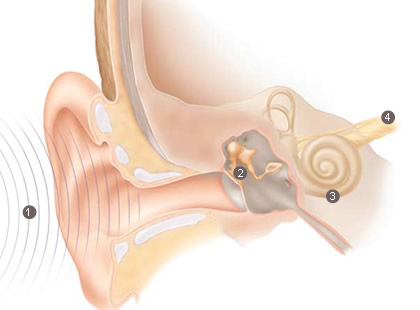
SENSORINEURAL
This is the most common type of hearing loss. Sensorineural hearing loss is caused by damage to the tiny hair cells in the ear that help transmit sound to your brain. These can bend or break due to:
The effects are almost always the same – it becomes harder to distinguish speech from noise, certain high-pitched sounds such as birdsong disappear altogether, people seem to be mumbling and you often have to ask them to repeat themselves.
Sensorineural hearing loss is permanent and can’t be corrected medically, but a hearing aid can almost always help.
CONDUCTIVE
This is caused by any blockage that prevents sound reaching the inner ear. This might include:
Conductive hearing loss is not necessarily permanent and can often be corrected medically or surgically.
MIXED- hearing loss is a combination of conductive and sensorineural hearing loss.
References
Arts HA. Sensorineural hearing loss in adults. In: Cummings CW, Flint PW, Haughey BH, et al, eds. Otolaryngology: Head & Neck Surgery. 5th ed. Philadelphia, Pa: Mosby Elsevier;2010:chap 149.
http://www.betterhearing.org/hearingpedia/hearing-aids/binaural-advantage
http://www.hearingaidhelp.com/hearing-loss.html
http://www.gnresound.com/your-hearing/about-hearing-loss/types-and-causes-of-hearing-loss

Join Our Team! Job Title: Administrator & Customer Service Agent Job Type: Part-Time (Potential Full-Time) Location: Brentwood Village Mall – NW Calgary, AB About Us Academy Hearing Centres is a locally...
Read More
To limit drop-in traffic through the clinic, please contact us prior to stopping by so we can give you our undivided attention. Appointments In-clinic appointments are being scheduled on a priority basis For...
Read More
If you or someone you know suffers from hearing loss, then you know how difficult it can be to deal with. It’s frustrating, isolating, and unmotivating. Everything in your life feels off and it can be hard to get things back to normal. That’s...
Read More